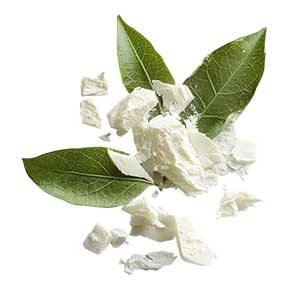Camphor, derived from the wood of the camphor tree (Cinnamomum camphora), has a rich history that spans several cultures and millennia. Traditionally, it was harvested in Asia, particularly in Borneo and Sumatra, which is why it's also known as Borneo or Sumatra camphor. The extraction process involved the distillation of wood chips from the camphor tree, a large evergreen native to Asia, particularly Japan and China.
In ancient and medieval times, camphor was highly valued as an incense and a component of religious ceremonies across Asia. It made its way along the Silk Road, becoming a coveted item in the Arab world and eventually in medieval Europe. In addition to its use in religious and spiritual practices, camphor has been historically used for its medicinal properties. It was used to treat infections, reduce pain, and as a preservative due to its antibacterial and moth-repellent qualities.
In perfumery, camphor is prized for its distinctive aromatic profile that offers a penetrating, cool, and almost minty aroma. This makes it a valuable ingredient in creating fragrance compositions that require a burst of freshness or a stimulating olfactory sensation. Camphor's intense aroma blends well with woody, spicy, and herbal notes, making it a versatile middle note in many aromatic and fougere fragrances.
The use of camphor in perfumery also extends to its effect on the olfactory system, where it can evoke sensations of cleanliness and freshness, often desired in colognes, aftershaves, and fresh linen fragrances. Moreover, camphor is used to enhance the perception of other ingredients, helping to elevate their aromatic qualities without overpowering them.
In terms of its conceptual contributions to fragrance compositions, camphor evokes feelings of clarity and invigoration. It can transport the wearer to a forested landscape, reminiscent of cool woods and crisp air, making it ideal for fragrances aimed at inducing a sense of natural freshness and outdoor vibrancy.
Natural or Synthetic?
Natural camphor is extracted from the wood of the camphor laurel tree, but synthetic versions are common due to cost-effectiveness and quality control. Both forms replicate its distinctive sharp and fresh characteristics.
Fragrance Families Camphor Most Commonly Found In
Show fragrances that contain Camphor as a note



